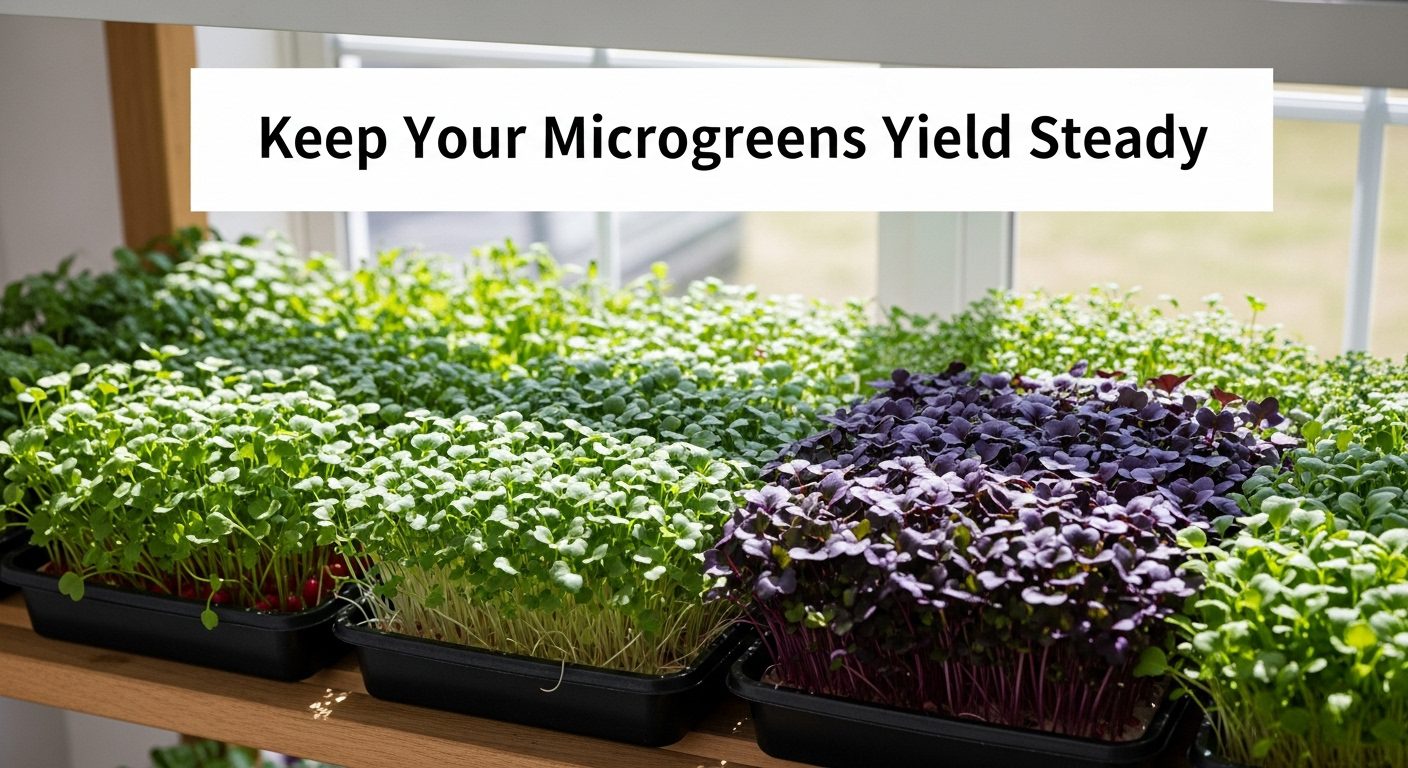
Dwarf mango trees are amazing, they can give you fruit in just two to three years. You can grow them in big pots, which is perfect for small spaces. This means you can have a tropical garden even if you don’t have a big yard.
You can choose special kinds of mango trees like ‘Julie’ and ‘Cogshall’ that grow well in pots.
With a little care and the right gardening tricks, you can have a lot of delicious mangoes and a beautiful garden.
By reading on, you can learn how to make your small space a tropical oasis with happy mango trees.
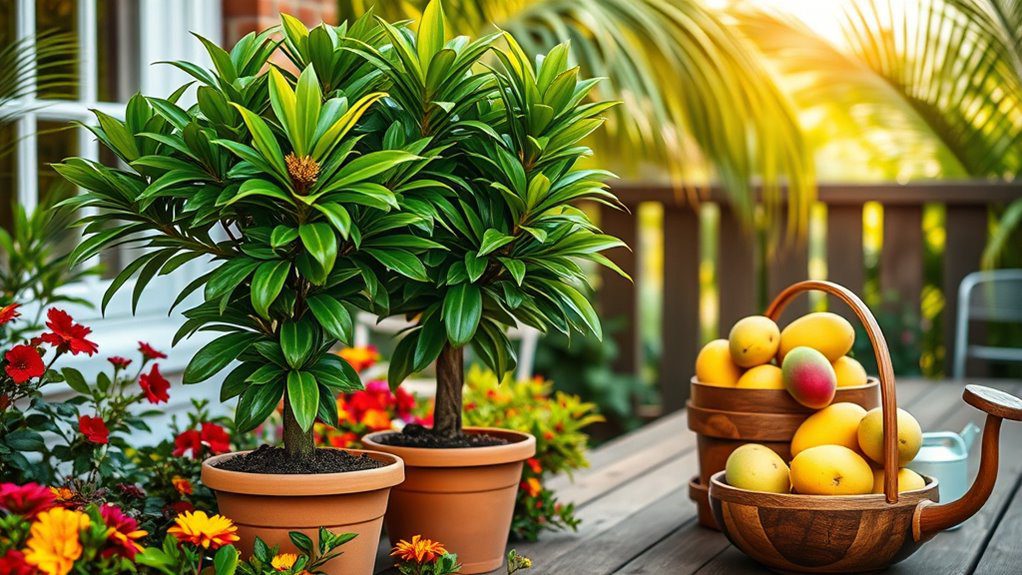
When selecting a mango variety for small spaces, consider dwarf or miniature varieties like ‘Julie’ or ‘Cogshall.’ These types typically reach heights of 3 to 6 feet, making them ideal for container gardening or limited areas. Additionally, they produce sweet, flavorful fruits while being more manageable in size. Confirm that the chosen variety is suited for your climate and provides the necessary sunlight and care for peak growth.
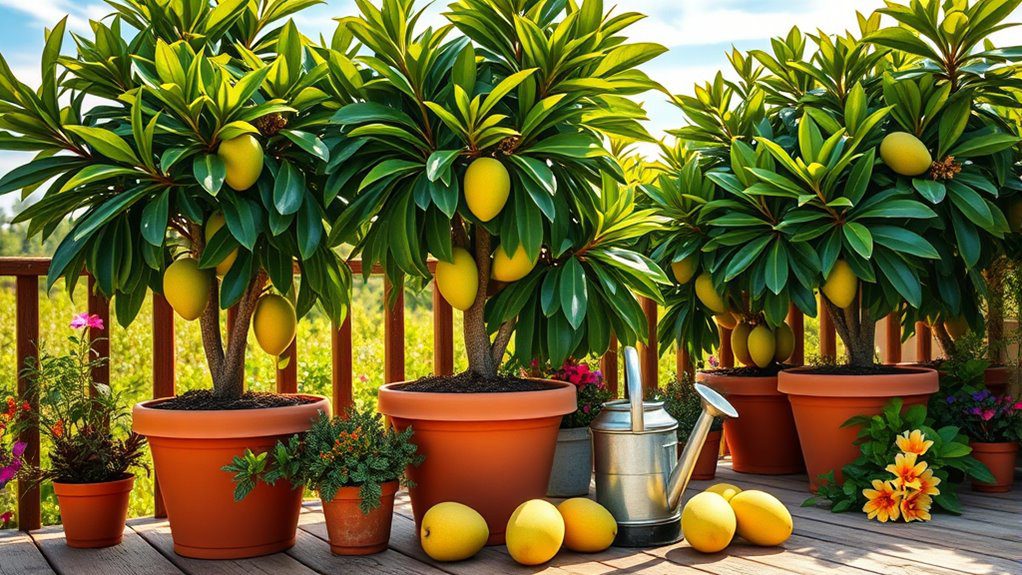
Container gardening offers an excellent solution for growing mango trees in small spaces. By planting mango trees in pots, you can enjoy their lush foliage and delicious fruits without needing a large yard. Choose a pot that is at least 18-24 inches in diameter and guarantee it has good drainage. Opt for a dwarf variety, which is better suited for containers. Regular watering, ample sunlight, and proper fertilization will help your mango tree thrive in its portable home.
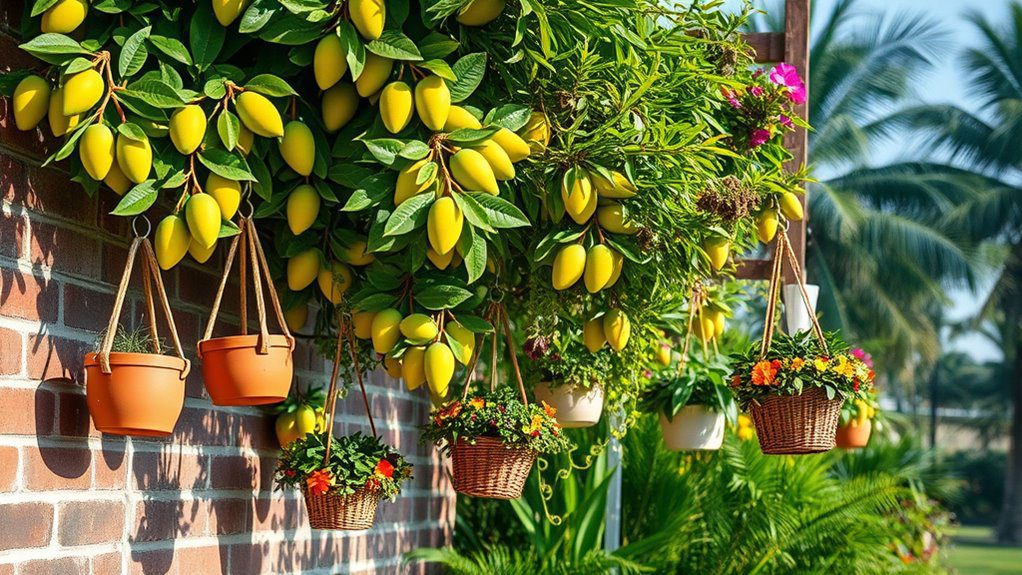
Vertical gardening techniques are ideal for growing mango plants in small spaces, allowing you to maximize limited square footage. By using trellises, hanging pots, or wall-mounted planters, you can create a stunning vertical garden that showcases your mango plants while optimizing sunlight exposure and air circulation. These techniques not only save space but also promote healthy growth and can add an aesthetic appeal to your outdoor or indoor environment, making it possible to enjoy tropical plants even in confined areas.
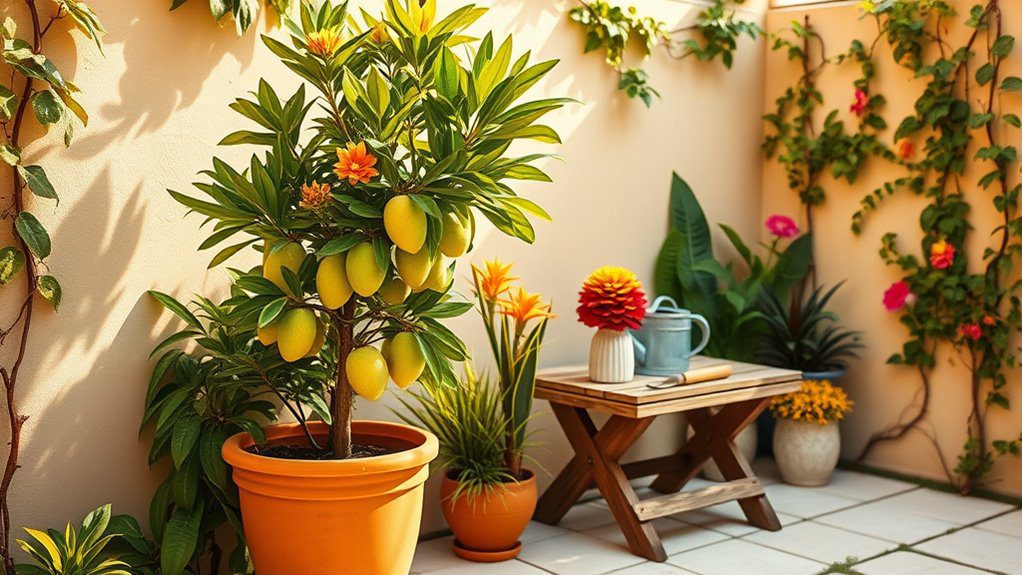
Maximizing sunlight in small outdoor areas is essential for the healthy growth of mango plants. Position your plants in spots that receive at least six hours of direct sunlight daily, ideally near south-facing walls or patios. Utilize reflective surfaces, such as light-colored walls or paving, to bounce sunlight onto your plants. Additionally, pruning surrounding foliage can help reduce shading, ensuring your mango plants thrive in limited space while enjoying ideal sun exposure.
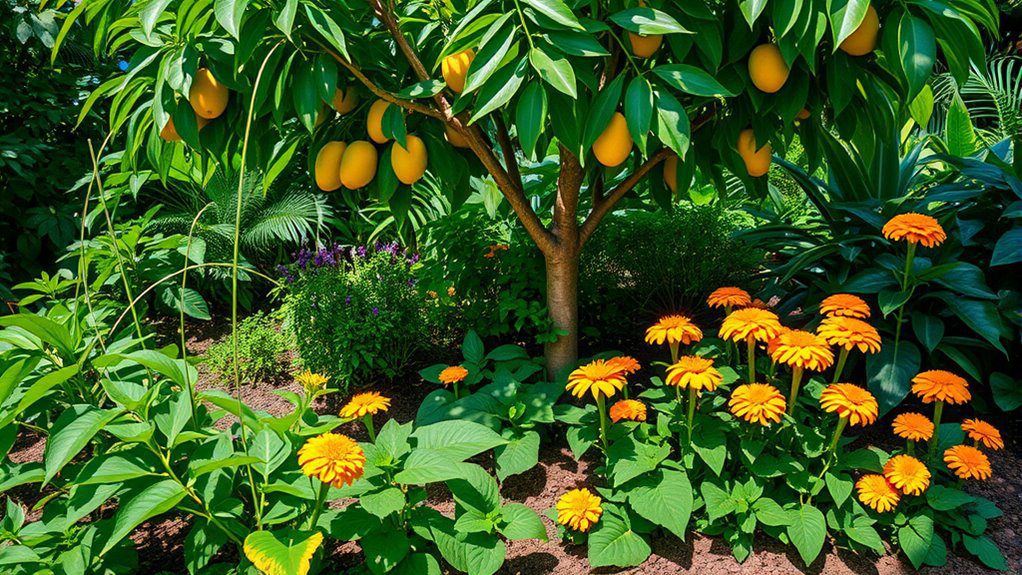
Companion planting with mango trees involves selecting compatible plants that enhance growth, deter pests, and improve yield. Suitable companions include herbs like basil and marigold, which can repel harmful insects while attracting beneficial pollinators. Additionally, planting ground covers such as sweet potatoes can help retain moisture and reduce weed growth. By thoughtfully integrating these plants, gardeners can create a thriving ecosystem that supports the health of mango trees in small spaces.
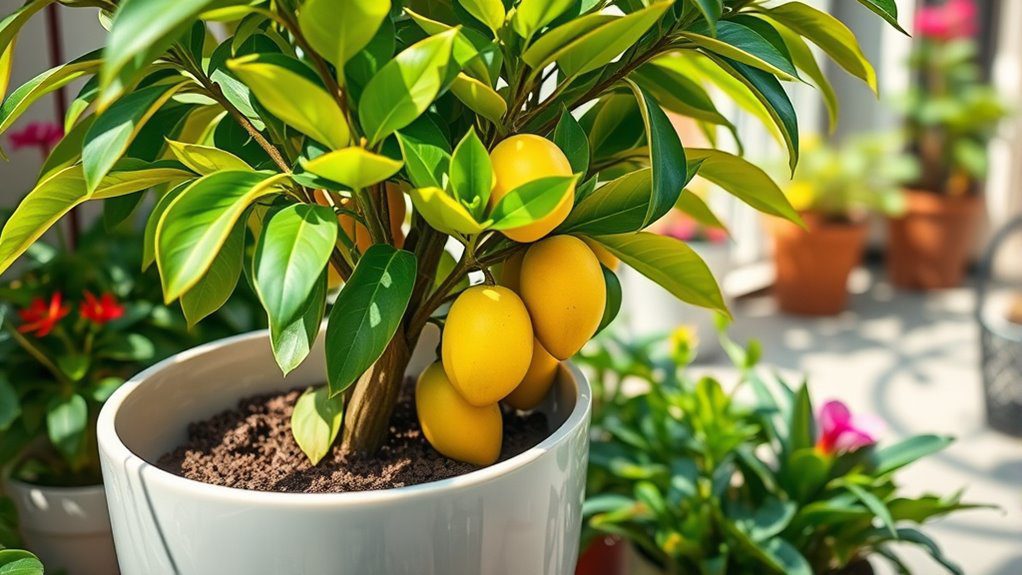
Self-watering planters are an ideal solution for growing mango plants in small spaces with minimal maintenance. These planters feature a built-in reservoir that supplies water to the plant roots as needed, ensuring consistent moisture without the risk of overwatering. This design not only reduces the frequency of watering but also promotes healthy root development. Perfect for busy urban gardeners, self-watering planters allow you to enjoy the beauty and bounty of mango trees with ease.
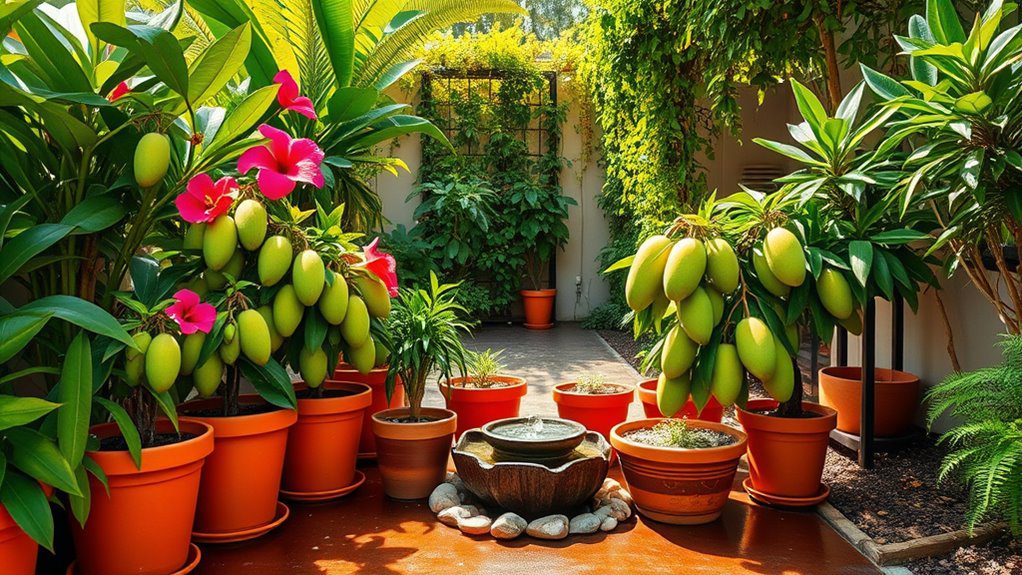
Creating a tropical microclimate for mango plants in small spaces involves optimizing environmental conditions to mimic their natural habitat. This can be achieved by selecting a sunny location, using protective barriers like walls or trellises to shield against harsh winds, and adding mulch to retain moisture. Incorporating potted plants and water features can help increase humidity, creating a nurturing atmosphere that encourages healthy growth and fruitful yields even in limited areas.
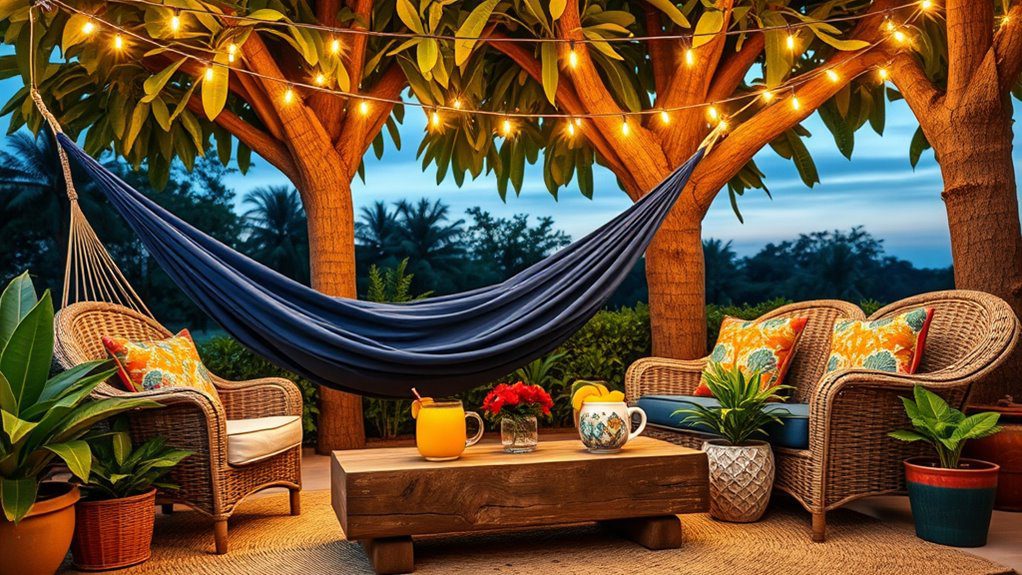
Designing a cozy outdoor lounge area around mango plants can create a charming retreat in small spaces. Incorporate comfortable seating, such as plush chairs or a hammock, positioned near the fragrant mango tree to enjoy its beauty and shade. Use decorative cushions and soft throws to enhance comfort, and add ambient lighting, like string lights or lanterns, to create a warm atmosphere. Surround the area with potted plants and a small table for drinks, making it the perfect spot for relaxation and socializing.
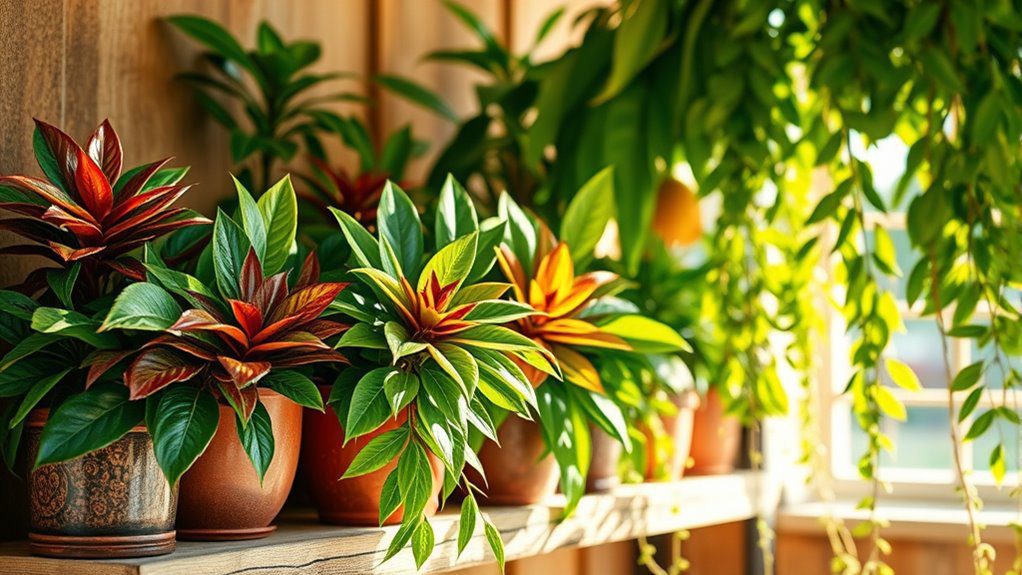
Using colorful foliage in mango plants can greatly enhance small spaces, bringing vibrancy and life to your home or garden. The lush, rich greens of mango leaves, along with their potential for reddish or yellowish hues, create a dynamic visual contrast. Strategically placing these plants near windows or in cozy corners can maximize their aesthetic impact, making your environment feel more inviting and lively while still utilizing limited space effectively.
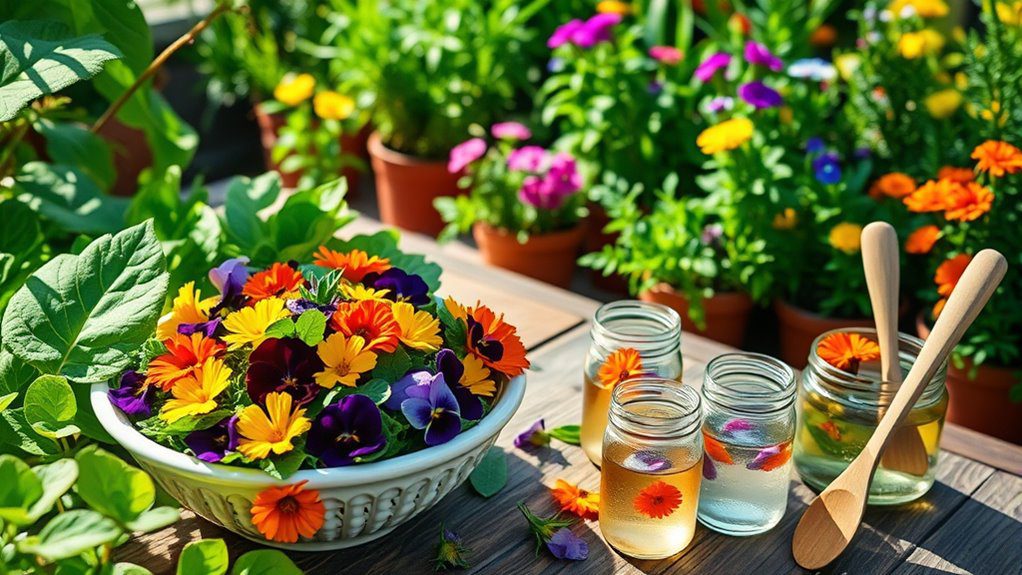
Incorporating edible flowers into your garden not only enhances its beauty but also adds unique flavors to your culinary creations. Varieties like nasturtiums, pansies, and calendulas are perfect for small spaces, as they can be grown in containers or alongside other plants. These vibrant blooms are not only visually appealing but also attract pollinators, promoting overall garden health. Consider using them to garnish salads, desserts, or to infuse flavors into beverages, creating a delightful and functional garden space.
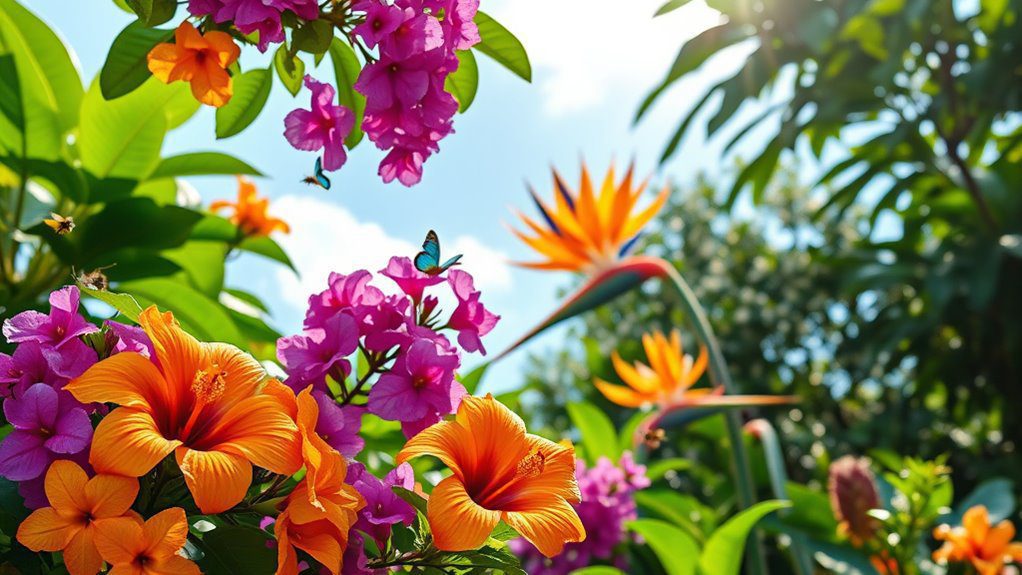
Attracting pollinators to your small space garden can be easily achieved with tropical plants like mango, hibiscus, and bird of paradise. These vibrant flora not only add visual appeal but also serve as essential food sources for bees, butterflies, and hummingbirds. By incorporating a variety of flowering tropical plants, you create a lush environment that encourages pollinator activity, ensuring a healthy ecosystem while enjoying the sweet rewards of growth and fruit production.
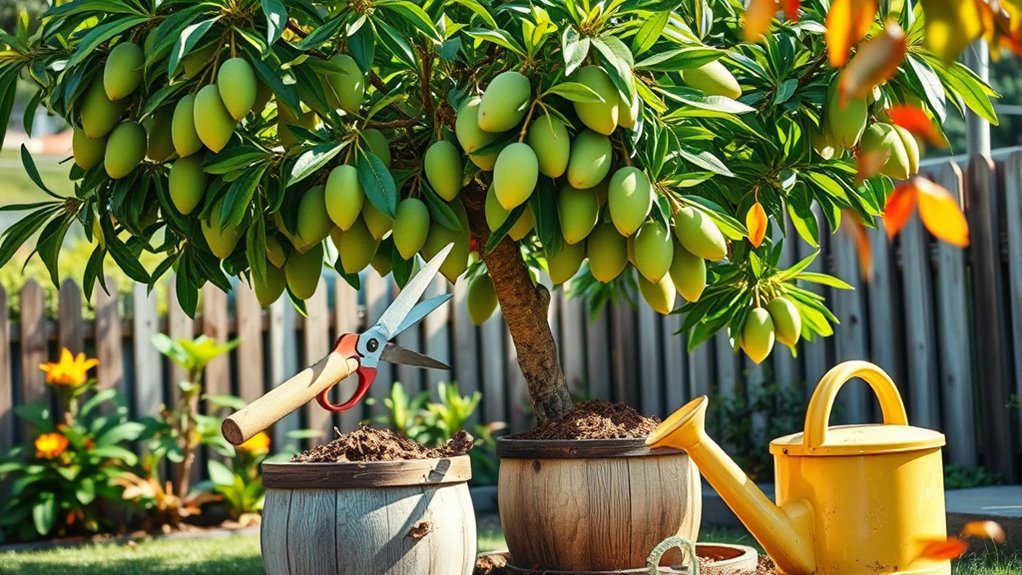
Seasonal maintenance for mango trees is essential to guarantee healthy growth and fruit production, especially in limited spaces. During spring, focus on pruning to shape the tree and remove any dead or overcrowded branches. In summer, regular watering and mulching will help retain moisture. In the fall, check for pests and diseases, applying organic solutions if needed. Finally, in winter, protect the tree from frost and consider applying a slow-release fertilizer to boost growth for the upcoming growing season.
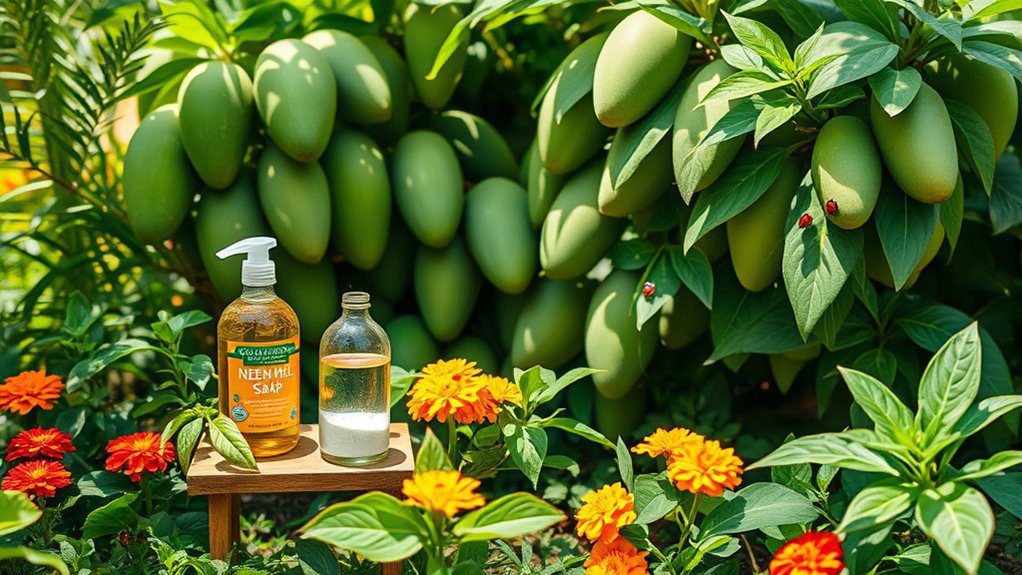
Organic pest control in small gardens, especially when growing mango plants, involves a holistic approach to maintaining plant health. Utilizing natural remedies such as neem oil, insecticidal soap, and diatomaceous earth can effectively deter pests without harming beneficial insects. Companion planting with herbs like basil or marigolds can create a deterrent for unwanted insects, while encouraging a vibrant ecosystem. Regular monitoring and introducing natural predators, such as ladybugs, also play a vital role in maintaining a pest-free environment.
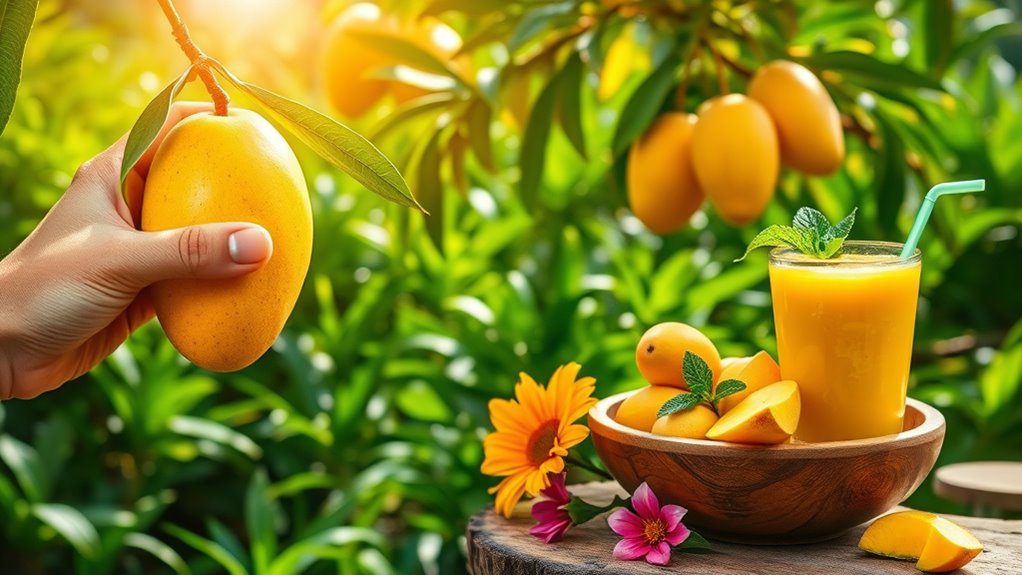
Harvesting mango fruits is an exciting culmination of your gardening efforts. Wait until the mangoes develop a vibrant color and emit a sweet aroma, indicating ripeness. Gently twist or cut them from the tree to avoid damage. Enjoy your fresh mangoes in various ways—slice them for salads, blend them into smoothies, or savor them on their own. Each bite offers a taste of tropical bliss, rewarding your patience and care in nurturing your small-space mango plants.
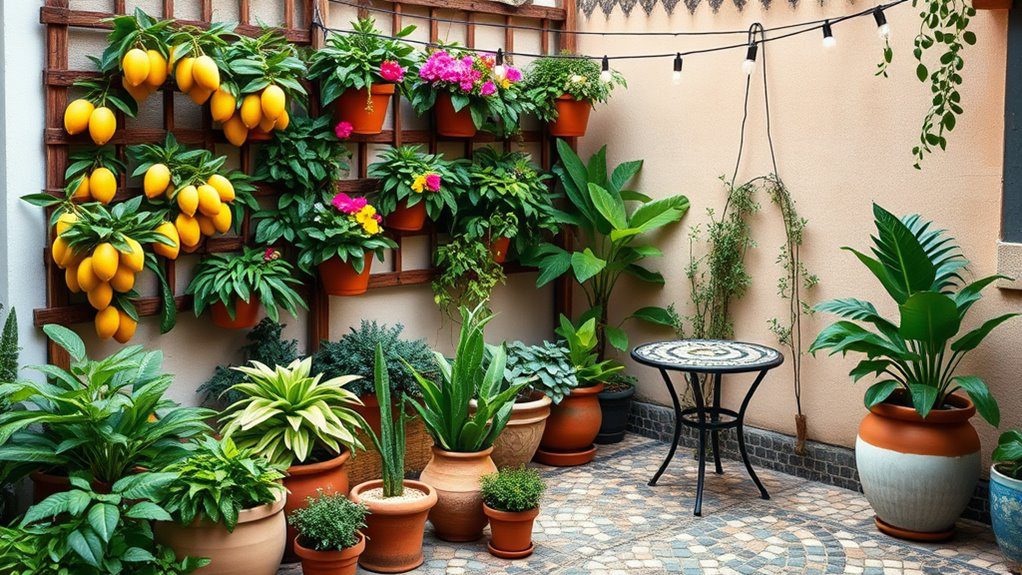
When dealing with small spaces, creative landscaping can transform your area into a lush oasis. Consider vertical gardening, using wall planters or trellises to grow mango plants upward. Incorporate raised beds to maximize planting space while adding aesthetic appeal. Use pots of varying heights to create visual interest and guarantee good drainage. Strategically place seating areas and pathways to enhance accessibility while maintaining a cozy atmosphere, perfect for enjoying the beauty of your mango plants.
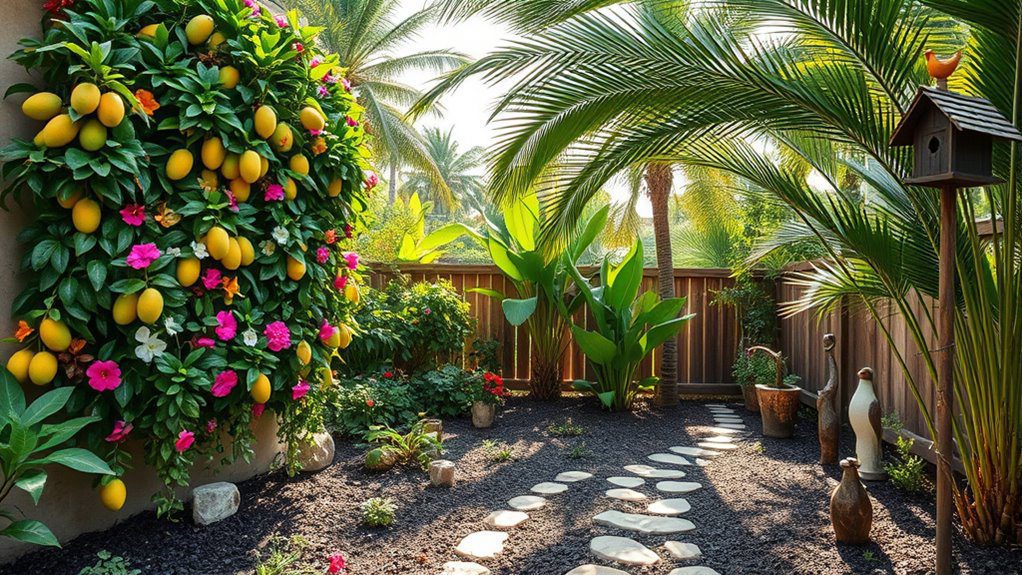
Transforming your small tropical garden can be a rewarding DIY project that enhances the beauty and functionality of your space. Consider building vertical planters to maximize limited ground space, or create an edible wall using climbing varieties of mango plants. Adding decorative paths using stones or mulch can also help define areas while improving drainage. Incorporate colorful garden art and recycled materials for unique touches, making your garden a vibrant retreat brimming with personality.
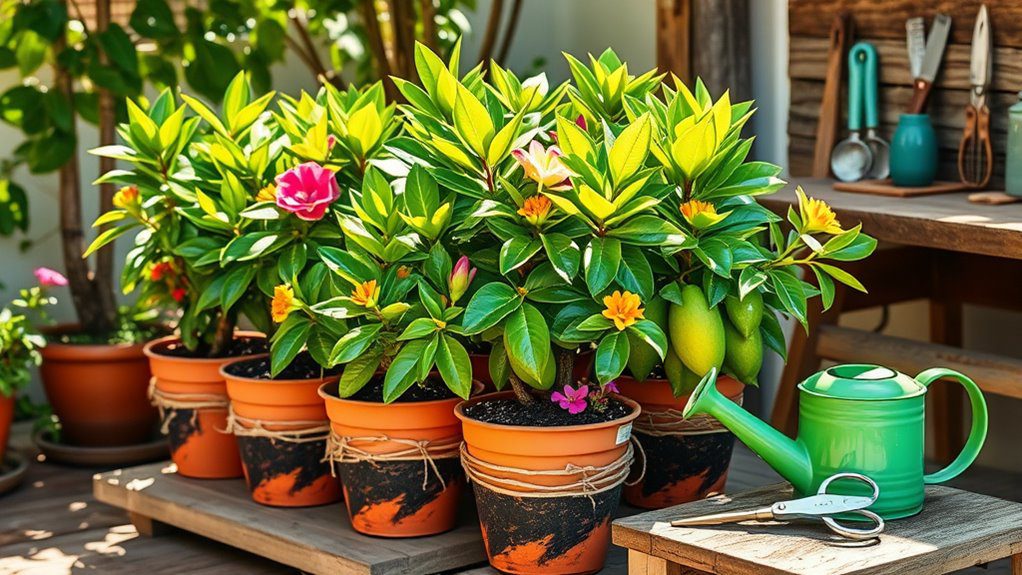
Year-round tropical garden care for mango plants in small spaces involves meticulous planning to guarantee ideal growth and fruit production. Start by selecting dwarf varieties suited for containers or limited areas, and provide well-draining soil enriched with organic matter. Regular watering and fertilization are essential, especially during the growing season. To protect against pests and diseases, maintain cleanliness and consider organic treatments. Additionally, location matters—choose a sunny spot to maximize exposure and guarantee health throughout the year.
To sum up, creating a vibrant tropical garden with dwarf mango varieties is both doable and rewarding. Did you know that mango trees can produce up to 200 fruits per season when properly cared for? By choosing the right varieties and utilizing techniques like container gardening and companion planting, you can maximize your small space while enjoying abundant, flavorful harvests. Embrace the potential your garden holds, and you’ll not only beautify your surroundings but also delight in the fruits of your labor.
